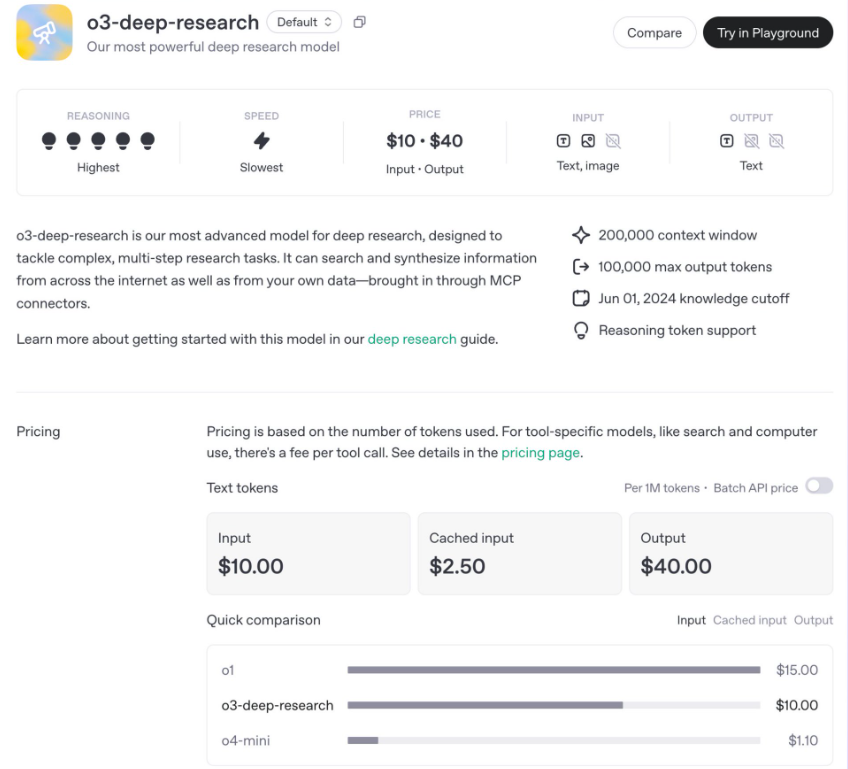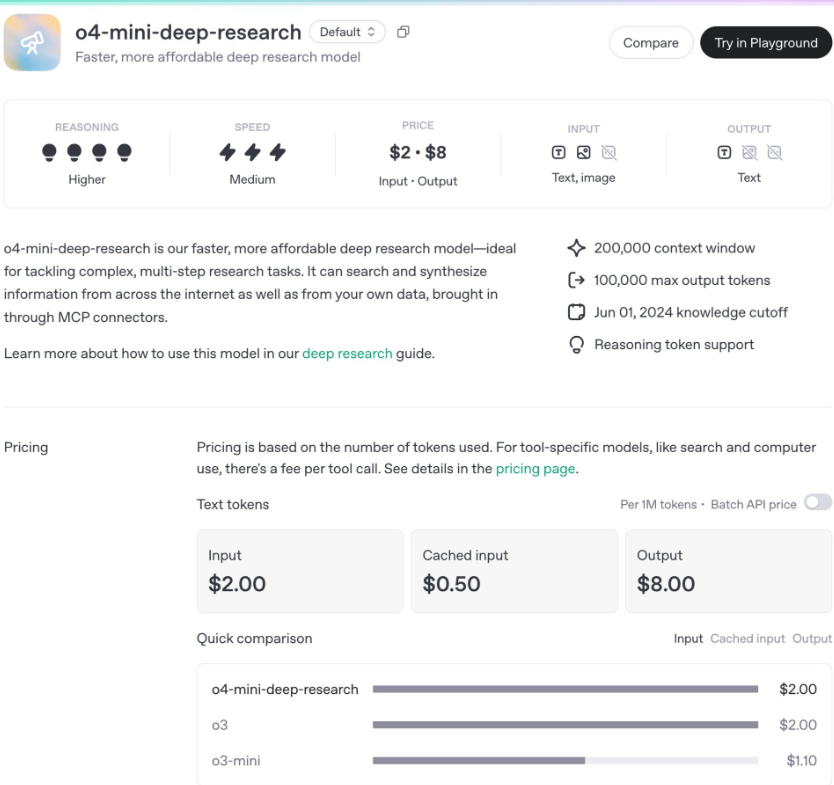On June 26, 2025, OpenAI announced the launch of two new Deep Research API models: o3-deep-research-2025-06-26 and o4-mini-deep-research-2025-06-26, marking a major breakthrough in automated research and complex task processing.
These two models are designed for advanced analysis and deep information synthesis, supporting developers to achieve automated web searching, data analysis, code execution, and more through APIs, providing powerful tools for enterprises, researchers, and developers.

O3 and O4-Mini: Balancing Performance and Efficiency
O3-deep-research is currently OpenAI's most powerful deep research model, with a reasoning capability rated at the highest level (5/5), specifically designed for tasks requiring complex reasoning and precise analysis, such as financial analysis and scientific research. In contrast, O4-mini-deep-research focuses on efficiency and cost-effectiveness, suitable for quickly handling large-scale queries while maintaining a high level of intelligence. In terms of pricing, the O3 model costs between $10 and $40 per 1000 calls, while the O4-mini is cheaper, priced between $2 and $8, meeting different budget needs.

Core Features and Application Scenarios
The Deep Research API supports multi-step research, web search, document analysis, and code interpreter functions by combining OpenAI's O3 and O4-mini models. Unlike the Deep Research feature in ChatGPT, the API version skips the interactive clarification steps, requiring developers to provide clear input prompts to directly generate structured, cited reports. AIbase noted that this API is particularly suitable for scenarios requiring rapid integration of large amounts of information, such as market competition analysis, academic research, or consumer product comparisons. Developers can also monitor long-running tasks through asynchronous processing and Webhook features, improving workflow efficiency.
Safety and Limitations Considerations
OpenAI emphasized that the Deep Research API is currently limited to use within the ChatGPT ecosystem and has not yet opened up more models to the API to evaluate potential "real-world persuasion risks," such as generating misleading information. Testing showed that the O3 model performed better than other OpenAI models in persuasive tasks, but it did not exceed human benchmarks in certain scenarios, reflecting its balanced consideration of safety and practicality. In the future, OpenAI plans to further optimize the model and explore integration with more professional data sources.
Industry Impact and Open Source Competition
AIbase observed that the release of OpenAI's Deep Research API comes amid intensifying competition. Google's Gemini Deep Research, DeepSeek's R1, and other open-source models, as well as Perplexity's API, are rapidly evolving, trying to capture the AI research tool market. Particularly noteworthy is that the open-source community has already launched similar Deep Research frameworks on platforms like Hugging Face, supporting local deployment and multi-model integration, demonstrating the strong vitality of the open-source ecosystem. OpenAI's API strategy aims to consolidate its leading position in the enterprise market by offering high performance and ease of use.
